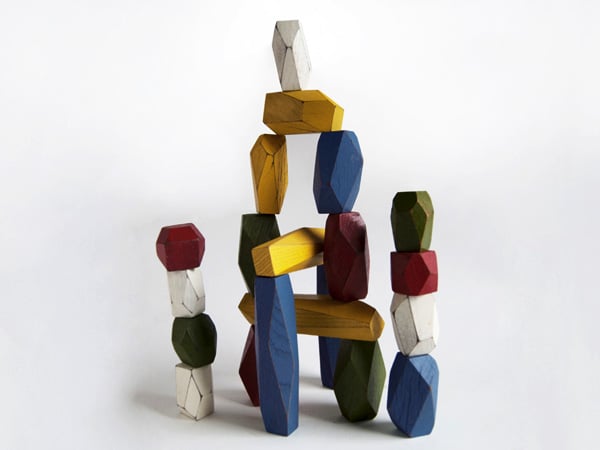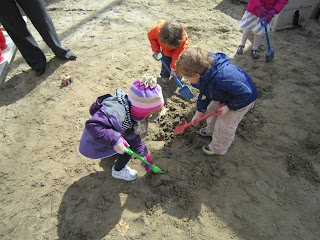I usually write about my experiences with younger children, but I was so moved by some time spent with the Girl Scout troop I lead a couple of weeks ago, that I feel compelled to share it.
But what was most impressive to me, was the reaction of the girls to the section reserved for blocks. One of the lobbies had huge buckets of very simple Kapla Blocks spaced about every four feet. There were girls building alone and many building cooperatively. The structures ranged from the simple to quite complex. My girls jumped right in and started building. A few joined a group building a large tower. Soon it was above their head and they started searching for taller and taller girls to join in their efforts. Others started building on their own. I sat down with a small group and started building myself.
spaced about every four feet. There were girls building alone and many building cooperatively. The structures ranged from the simple to quite complex. My girls jumped right in and started building. A few joined a group building a large tower. Soon it was above their head and they started searching for taller and taller girls to join in their efforts. Others started building on their own. I sat down with a small group and started building myself.
One of the girls commented, “This is so fun.” And to me, “this must be a fun change for you to be able to play with blocks.” I smiled and told her that I am lucky enough to be able to play with blocks everyday in my classroom. “Oh, you are lucky.”
Talking with the girls while building, they reminisced playing with blocks at home. The other moms that were helping to chaperone talked about how they still had the blocks their girls used to play with at home. I told them that they should get them back out.
At one point we attempted to fit in another activity and after looking at it, the girls pleaded to go back to the block building.
This is a salient reminder that older children can still really enjoy simple, creative play time. In this day and age of teenagers playing only with electronic gadgets such as their phones or iTouches, it is up to the adults in their lives to provide and encourage this creative type of play. Play without directions or rules; without a “right” way to do it; using familiar materials in innovative ways.
If you have older children or teenagers try dusting off those blocks you put away and put them out. If you have young children keep the blocks out as they get older. They will play with them differently, but they will play with them.
A colleague of mine recently sent me a link to these great blocks called Balancing Blocks from Yanko Design.
I could see children of all ages playing with these. I can even envision them on the desk of a high powered CEO where he could play with them when he needed a creativity break. Hey, Fathers Day is coming up!
























































